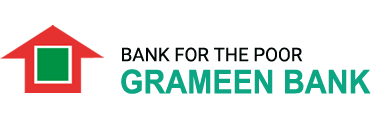Microfinance has emerged as a game-changer in women’s empowerment, offering a lifeline to those traditionally shut out of the banking system. By extending small loans to women in underserved communities, these initiatives are sparking a quiet revolution. We’re seeing women launch businesses, breathe new life into existing ventures, and take charge of their financial futures. But it’s not just about the money – microfinance is fostering a new sense of confidence and independence.
As women become breadwinners and decision-makers, the chain reaction touches entire communities. From improved living conditions to increased investment in education and health, the impact of these small loans is anything but small. It’s a testament to the transformative power of financial inclusion, proving that sometimes, the biggest changes start with the smallest of steps.
Understanding Microfinance
What is Microfinance? Microfinance refers to financial services, such as loans, savings, and insurance, offered to individuals or small businesses lacking access to conventional banking. It aims to provide financial inclusion to marginalized groups, particularly women, who often face barriers in accessing financial resources.
The Role of Microfinance in Women’s Empowerment

Microfinance empowers women by:
- Providing Access to Capital: Women can start or grow businesses, generating income and improving their economic status.
- Promoting Financial Literacy: Programs often include training on financial management, enhancing women’s skills and knowledge.
- Encouraging Savings: Microfinance institutions (MFIs) offer savings accounts, encouraging women to save and plan for the future.
- Building Confidence: With financial independence, women gain confidence and a stronger voice in their households and communities.
Benefits of Microfinance for Women
Economic Empowerment: Access to it allows women to invest in entrepreneurial ventures, increasing their income and economic stability. This economic empowerment enables women to support their families, improve their living conditions, and break the cycle of poverty.
Social Empowerment: Its programs often foster community support networks, where women can share experiences and advice. These networks promote social cohesion and provide a platform for collective action, further empowering women to advocate for their rights and interests.
Challenges and Solutions
Overcoming Barriers Despite its benefits, microfinance faces challenges, including:
- High Interest Rates: Some MFIs charge high interest rates, which can be burdensome for borrowers. Solutions include promoting transparent pricing and supporting nonprofit MFIs.
- Limited Reach: Its services may not reach the most remote or underserved areas. Expanding digital financial services can help bridge this gap.
- Sustainability Issues: Ensuring the sustainability of MFIs is crucial for their long-term impact. This requires balancing social goals with financial viability.
Success Stories

Grameen Bank
Founded by Nobel Laureate Muhammad Yunus, Grameen Bank in Bangladesh is a pioneer in microfinance. It has provided millions of women with microloans, leading to significant improvements in their economic and social status. Grameen Bank’s success demonstrates the transformative potential of microfinance in women’s empowerment.
Impact of Microfinance in India
In India, MFIs like Self-Employed Women’s Association (SEWA) have empowered women by providing financial services and vocational training. Women have used microloans to start businesses, improve their homes, and pay for their children’s education, illustrating the multifaceted impact of it.

Microfinance has proven to be a powerful catalyst for women’s empowerment, driving both financial independence and social transformation. As we’ve seen time and again, these small loans can spark big changes, helping women launch businesses, support their families, and gain a stronger voice in their communities. But it’s not without its challenges. To truly harness the potential of microfinance, we need to learn from past successes and address ongoing hurdles. This means tailoring programs to local contexts, ensuring fair interest rates, and providing financial education alongside loans.
By fine-tuning our approach and embracing innovation, we can amplify microfinance’s impact. The goal? To unlock the untapped potential of millions of women worldwide, creating a ripple effect that lifts entire communities. It’s a tall order, but the payoff – in terms of inclusive growth and sustainable development – is immeasurable.

